I am trying to debug the circuit above. The transmitter pin from the MCU is connected to the NSBC114EDP6's (SMD marking code 7A) input pin 2, and the output from pin 3 is connected to another MCU receiver pin.
I have scoped the input and output data from the NSBC114EDP6; there is no voltage difference. I have attached the scope image below:
channel_1 (yellow) - input NSBC114EDP6
channel_2 (green) - output NSBC114EDP6
I would like to know what the purpose of the NSBC114EDP6 is.

